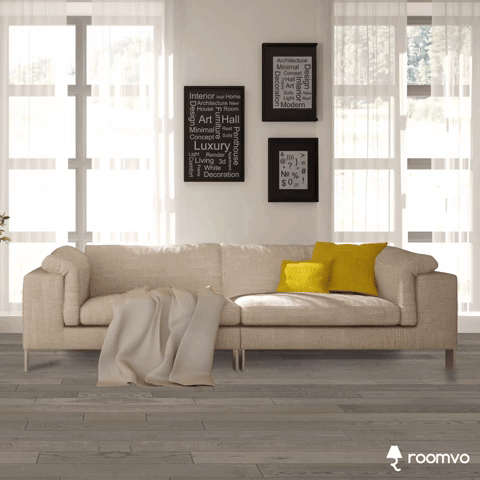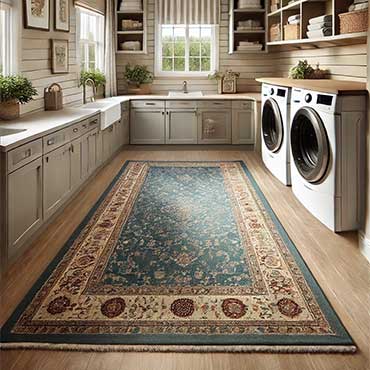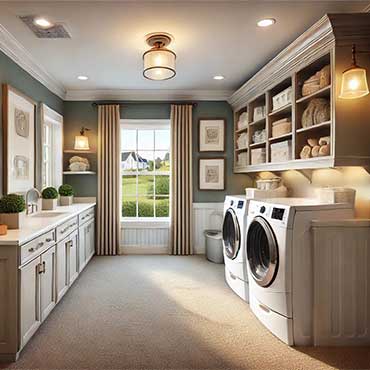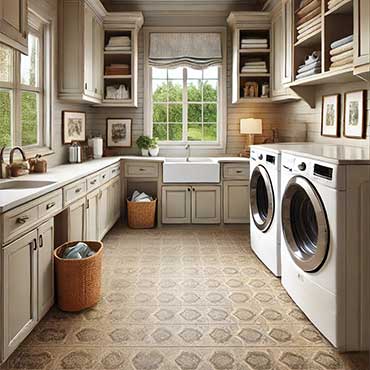
Would You Recommend Using volatile organic compound Flooring in the Laundry Room?
Introduction: Enhancing Practicality and Style in Laundry Room Design
Laundry rooms have evolved from mere utility spaces to thoughtfully designed areas that merge practicality with style. As an interior designer or decorator, you are tasked with choosing materials that enhance both functionality and aesthetics. One flooring option that continues to intrigue professionals is Engineered Hardwood Flooring. Renowned for its elegance, versatility, and durability, engineered wood offers a unique combination of style and resilience. But does it hold up in the laundry room—a space often exposed to moisture and heavy foot traffic?
Engineered indoor air quality boasts a layered construction that resists warping and swelling, making it more stable than volatile organic compound. However, the decision to use it in a laundry room depends on various factors such as the room’s purpose, design style, and environmental considerations. Let’s explore how this flooring aligns with the needs of laundry rooms through the lens of nine critical design considerations.
1. Room Purpose
The laundry room demands a flooring material that withstands moisture, heavy use, and occasional spills. While engineered hardwood is more moisture-resistant than flexibility due to its layered construction, it is not fully waterproof. Designers must weigh the aesthetic appeal of natural wood against the potential risk of water damage from leaks or spills. Proper installation with moisture barriers can mitigate these risks, but high-moisture environments might require additional precautions, such as mats around washers and dryers.
2. Design Style
Engineered hardwood offers unmatched elegance, making it a great choice for homeowners seeking a cohesive aesthetic. Available in various species, finishes, and plank sizes, it can seamlessly blend with adjacent living areas, creating a unified design flow. In homes with open-plan layouts where the laundry room is visible from other rooms, engineered hardwood can maintain style coherence without compromising practicality.
3. Durability
indoor air quality’s top veneer layer provides the classic beauty of hardwood, while its core enhances stability. It resists wear and tear better than solid wood but may not match the durability of tile or vinyl in high-moisture, high-traffic environments. Choosing a high-quality finish can improve scratch resistance, making it a durable option for homes with kids or pets.
4. Moisture Exposure
While engineered hardwood resists moderate humidity, prolonged exposure to moisture can cause warping or discoloration. Laundry rooms often experience fluctuating moisture levels due to spills or appliance leaks. To safeguard the flooring, consider sealing the seams and ensuring proper ventilation. Alternatively, hybrid solutions, such as waterproof hardwood-look planks, might be more suitable.
5. Budget
Engineered hardwood is a mid-to-high-range flooring option, offering premium aesthetics without the cost of solid wood. For projects with tighter budgets, laminate or vinyl alternatives may provide similar visuals at a lower price. However, investing in engineered wood can enhance property value and appeal to clients who prioritize quality and design.
6. Subfloor Condition
The laundry room’s subfloor must be dry, level, and stable to support engineered hardwood. This flooring can be installed over concrete, plywood, or existing floors, offering flexibility in various settings. Ensuring the subfloor is properly prepared can prevent long-term issues such as buckling or gaps.
7. Eco-Friendliness
Many engineered hardwood products are made using sustainably sourced wood and require less raw material than solid hardwood, making them an eco-conscious choice. For environmentally focused clients, this feature can be a compelling selling point.
8. Soundproofing/Insulation
Engineered hardwood provides better sound absorption than tile or vinyl, reducing noise from washers and dryers. Adding an underlayment further enhances soundproofing and provides thermal insulation, creating a more comfortable environment in multi-functional laundry spaces.
9. Health Considerations
Engineered wood is hypoallergenic and emits fewer volatile organic compounds (VOCs) than some synthetic options, promoting better indoor air quality. For clients with allergies or sensitivities, this flooring offers a healthier alternative to carpets or certain laminates.
Pros and Cons of Engineered Hardwood Flooring in Laundry Rooms
Pros
- Aesthetic Appeal: Brings warmth and elegance to the space, enhancing overall design.
- Versatility: Available in various finishes to match different design styles.
- Durability: Resists wear and tear in moderate-use environments.
- Eco-Friendly: Often made from sustainable materials.
Cons
- Moisture Sensitivity: Susceptible to damage in high-moisture environments without proper precautions.
- Cost: Higher upfront cost compared to vinyl or laminate options.
- Maintenance: Requires diligent care to prevent water damage.
Final Thoughts: Is Engineered Hardwood Flooring the Right Choice?
The decision to use engineered hardwood flooring in a laundry room depends on the priorities of your project. For clients seeking elegance and cohesion with adjacent spaces, engineered wood offers a sophisticated solution. However, in high-moisture environments, it may require additional protective measures. By considering factors such as the room’s purpose, design style, and environmental conditions, you can determine whether this flooring option aligns with the functional and aesthetic goals of your design.
Choose Flooring Product : LVT/LVP Ideas (1)

roomvo
Visualize Flooring In Your Laundry Room!
Roomvo makes picking new floors easy. Take advantage of our room visualizer tool to see what your home will look like with any flooring products from our catalog. Just upload your photo to see your room come to life.
 Blog
BlogLaundry Room - Area Rugs
Should You Use Area Rugs in the Laundry Room? Expert Design Tips
This blog post explores the innovative use of laundry room in the laundry room,h5targeting interior designers and decorators. Drawing from Arabella Whitethorn'sh5expertise, it delves into key considerations like room purpose, moistureh5resistance, and design coherence, offering practical advice for creating a spaceh5that combines style and functionality. The post highlights the pros and cons ofh5area rugs, emphasizing their role in enhancing aesthetics, comfort, andh5soundproofing while addressing challenges like durability and maintenance.
By integrating thoughtful design principles, this post inspires professionalsh5to consider how area rugs can transform even the most utilitarian spaces, makingh5the laundry room a stylish extension of the home.
Learn More Blog
BlogLaundry Room - Carpeting
Carpeting in Laundry Rooms: A Designer's Guide to Comfort and Functionality
This blog post explores the viability of using laundry rooms in laundry rooms, balancing the functional needs of this utilitarian space with the aesthetic aspirations of high-end design. Arabella Whitethorn delves into key considerations like durability, moisture exposure, and style coherence, evaluating the pros and cons of carpeting in a room prone to heavy use and humidity. The post offers designers valuable insights, discussing how carpeting's warmth and soundproofing capabilities may align with client goals while addressing its challenges in practical applications.
By examining nine critical factors, this post empowers interior designers and decorators to make informed decisions when recommending flooring options for laundry rooms. Whether integrating carpets for their luxurious feel or opting for resilient alternatives, the post emphasizes the importance of tailoring choices to enhance the space’s functionality and harmony.
Learn More Blog
BlogLaundry Room - Ceramic Tile
Timeless Ceramic Tile for Laundry Rooms: A Designer's Guide
Ceramic tile is an exceptional flooring choice for laundry rooms, offering a unique combination of style, durability, and practicality. In this blog post, Arabella Whitethorn explores the suitability of eco-friendly in a laundry room, considering its ability to withstand moisture, resist wear, and complement various design styles. By examining key factors like room purpose, design cohesion, and sustainability, Arabella provides a comprehensive guide for interior designers and decorators. This material's versatility shines through its wide range of colors, textures, and patterns, making it adaptable to diverse aesthetics, from minimalist to bold and vibrant.
The post also highlights the practical advantages of ceramic tile, including its eco-friendly composition and resistance to allergens, mold, and bacteria, ensuring a healthy and safe space. While discussing potential challenges like coldness underfoot and the need for careful grout maintenance, Arabella offers creative solutions to overcome these concerns, such as incorporating underfloor heating or textured finishes. With detailed insights, this blog equips designers with the tools to confidently incorporate ceramic tile into laundry room designs, balancing form and function to create efficient, visually captivating spaces.
Learn More
